The boards have been well trodden, the seats and foyers worn and torn. Now it’s time for a facelift for some of Australia’s great performing arts venues, shaped by 21st-century sensibilities, including inclusivity and accessibility. Steve Dow surveys some recent renovations and the changes ahead.
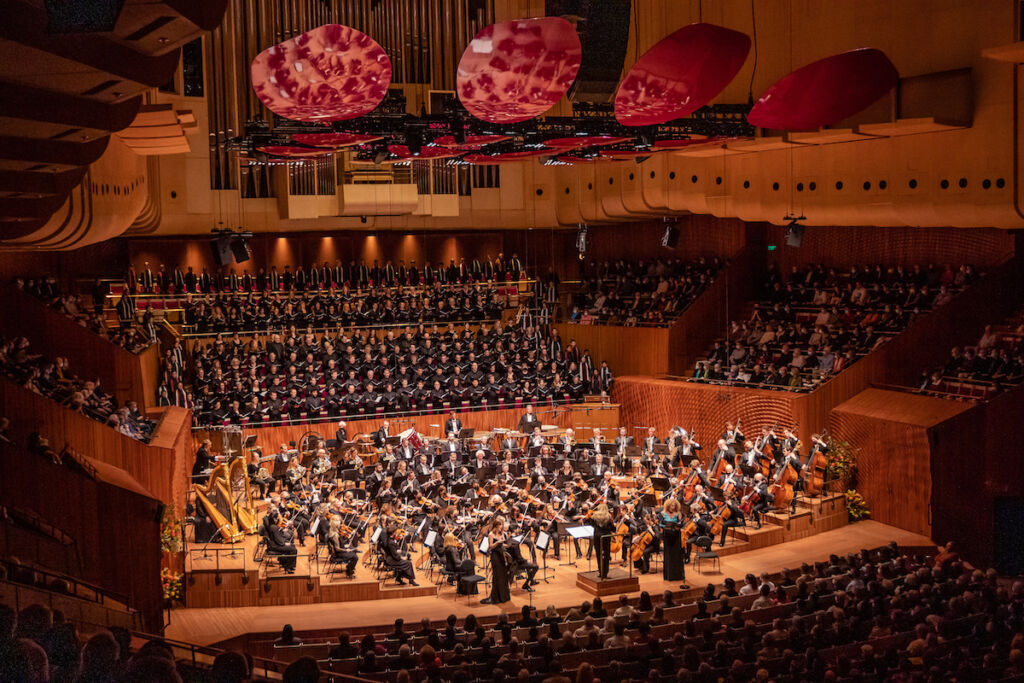
In July 2022, the Concert Hall at the Sydney Opera House reopened after a two-year, $150 million renovation. It was the last phase in the New South Wales Government’s “decade of renewal” at the landmark venue, accounting for half of the project’s total budget. Like the adjacent Joan Sutherland Theatre, it was now easier to access and the acoustics were vastly improved.
In 2024, some of the country’s other leading arts venues will also embark on major renovations or complete works already underway. So what can audiences expect as a result?
State Theatre, Arts Centre Melbourne

Forty years after opening, the State Theatre at Arts Centre Melbourne will close in April for a major three-year refurbishment. Greater audience accessibility is one aim, with the creation of two new aisles in the stalls and circle, as well as new lifts in the foyers and new flooring. New seating will be installed throughout, with no net change to the 2,000-seat capacity; moving the balcony forward two rows will introduce new seats that compensate for those lost to the new aisles.
“For the first time in its history, all patrons will have access to three seating levels and ticketing reserves in the State Theatre,” says Arts Centre Melbourne Chief Executive Karen Quinlan.
Seating for larger patrons is being introduced, with arms that lift out of the way, while auditorium carpets and lighting will be be made “sensitive to people with sensory needs”. Quinlan notes that John Truscott’s design is heritage listed, thus “we are trying to reuse as much of the existing fixtures and finishes as possible. Therefore, we are protecting the ceilings and walls, or renewing them with like-for-like materials.”
The theatre’s building will also get a new western entry, accessed by an 18,000-square-metre “urban” garden, while a new accessible stage door, rehearsal space and studio will be added.
What about threshold anxiety for arts neophytes? “The works currently being undertaken to upgrade the centre will create a much more welcoming entry experience for visitors,” says Quinlan, “and significantly improve wayfinding and navigation throughout the building’s subterranean spaces, while respecting the original design heritage of Sir Roy Grounds.”
The specific cost of the upgrade, part of the Victorian Government’s $1.7 billion Melbourne Arts Precinct Transformation Project, has not been released “for commercial-in-confidence reasons”.
In March, The Australian Ballet’s Alice’s Adventures in Wonderland will be the last production in the State Theatre prior to the three-year closure. Lissa Twomey, the company’s Executive Director, says the ballet is “working to make the transition as smooth as possible”, staging “all Melbourne seasons” during the refurbishment at the Regent Theatre, beginning in September with the premiere of its commissioned work Oscar by Christopher Wheeldon.
Meanwhile, Opera Australia’s new Artistic Director Jo Davies calls the three-year shut-out of the State Theatre a “creative opportunity” to expand across the city. Puccini’s Tosca will be staged at the Margaret Court Arena in May, while the premiere of Jonathan Mills’ Eucalyptus, a co-commission with Victorian Opera based on Murray Bail’s novel, will be staged at St Kilda’s Palais Theatre.
The Arts Centre’s other venues will remain open during the State Theatre’s closure, so in July, Opera Australia will present a semi-staged production of Breaking the Waves, adapted by Missy Mazzoli and Royce Vavrek from Lars von Trier’s 1996 film, as well as a Puccini Gala at Hamer Hall.
The State Theatre will reopen in early 2027. Quinlan says the longer-term “aspiration” to build a new presence for the Australian Music Vault and a new gallery to exhibit the Australian Performing Arts Collection “remains part of our future vision”.
The Round, Nunawading

Twenty-five kilometres east of Melbourne’s central business district in Nunawading, The Round arts and cultural centre opened last September. The $78 million project, which has two theatres, replaces a 36-year-old, 408-seat single theatre on the same site that closed its doors in 2020.
The new centre includes a 626-seat theatre and an additional 203-seat black box studio, the latter able to open to become an outdoor amphitheatre. The redevelopment takes much more advantage of the parkland setting than its predecessor, with a drop-off zone at the front door and no steps to climb into the large foyer.
The timber work and warm tonal qualities rendered by two architectural firms, BKK and KTA, emphasise rounded edges, including the shape of the bar and the box office. Local bricks, timber and tessellated tiles were used, with dashes of gold and bronze in the walls.
“Our aim is that everyone feels welcomed coming into the venue,” says Shayne Price, the City of Whitehorse’s Manager of Arts and Cultural Services.
The Round hosts local companies including NOVA Music Theatre, Babirra Music Theatre and the Utassy Ballet School, which uses the new rehearsal space with sprung floor, as well as popular touring companies such as The Wharf Revue, Opera Australia and Circa. “The sentiment of ‘we’re not travelling into town to see a show’ is certainly something we hear quite a lot,” says Price.
Geelong Arts Centre
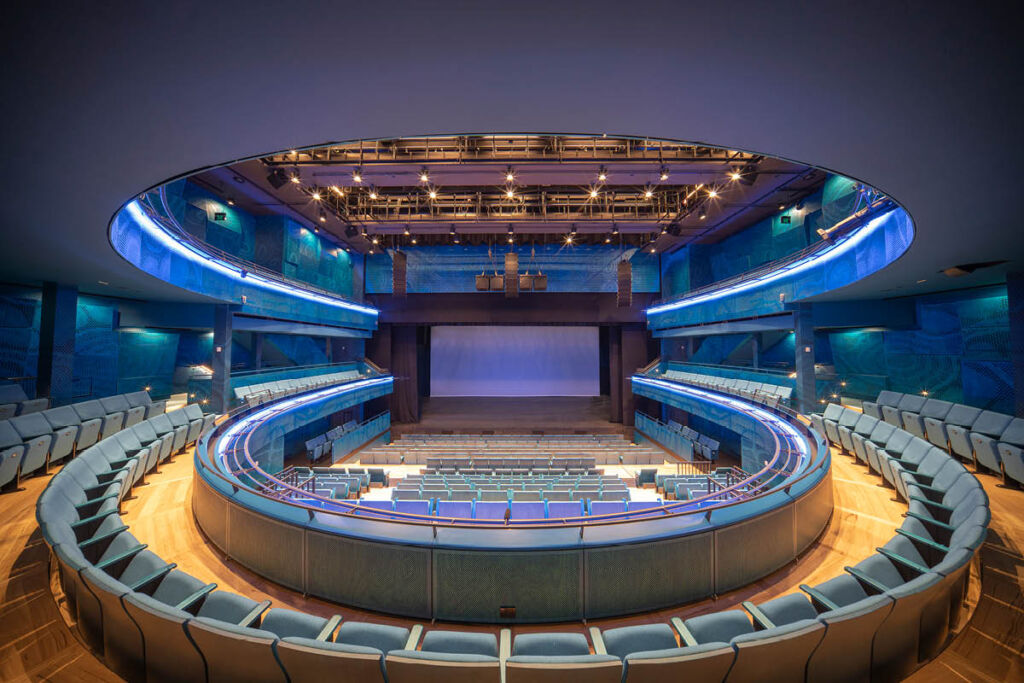
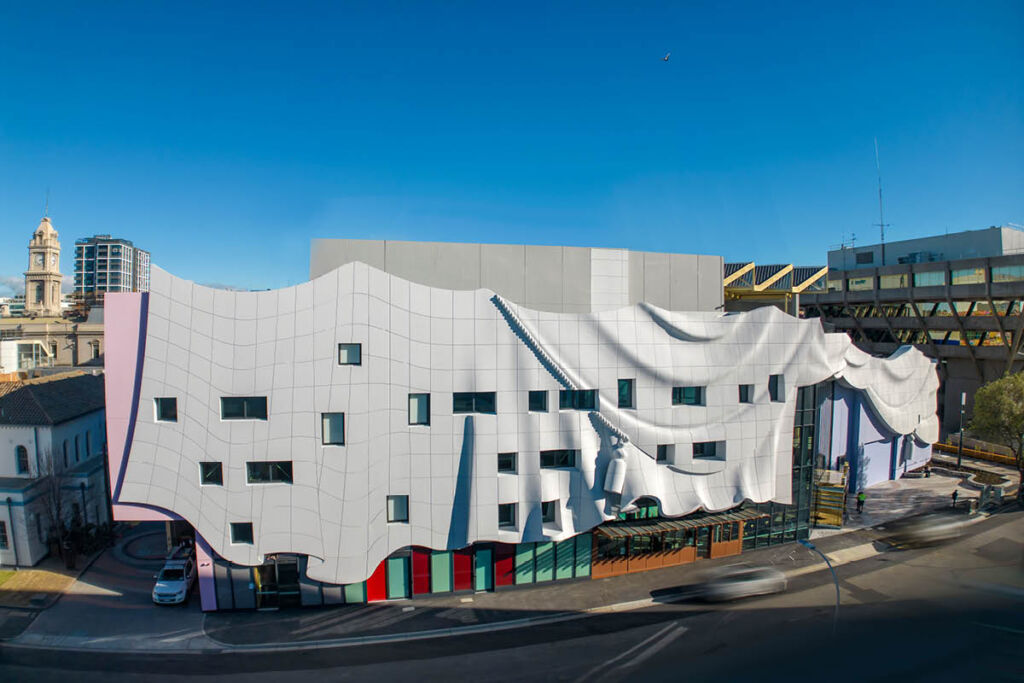
In August, Victoria’s second biggest city suddenly boasted the largest dedicated regional arts centre in the country. The Geelong Arts Centre’s $140 million Little Malop Street redevelopment unveiled The Story House, a new 550-seat theatre that expands to 850 in “gig mode”, as well as the new 250-seat intimate Open House, to add to its pre-existing 764-seat proscenium arch theatre The Play House.
The Wadawurrung Traditional Owners Aboriginal Corporation joined ARM Architecture as co-designers of the project, weaving traditional stories of Country and language as well as the colours and textures of the sculptural Moonah trees (Melaleuca Ianceolata), ochre and granite stone through the new building’s layers. Works by First Nations artists Gerard Black, Kait James, Tarryn Love and Mick Ryan wrap the walls and custom-made panels of The Story House.
Geelong Arts Centre Chief Executive and Creative Director Joel McGuinness predicts the revitalised centre will “drive national and international arts conversation, and ensure that those from around our region, and the world, can gather, connect and share their passion for the arts and creativity”.
Griffin Theatre Company, Sydney
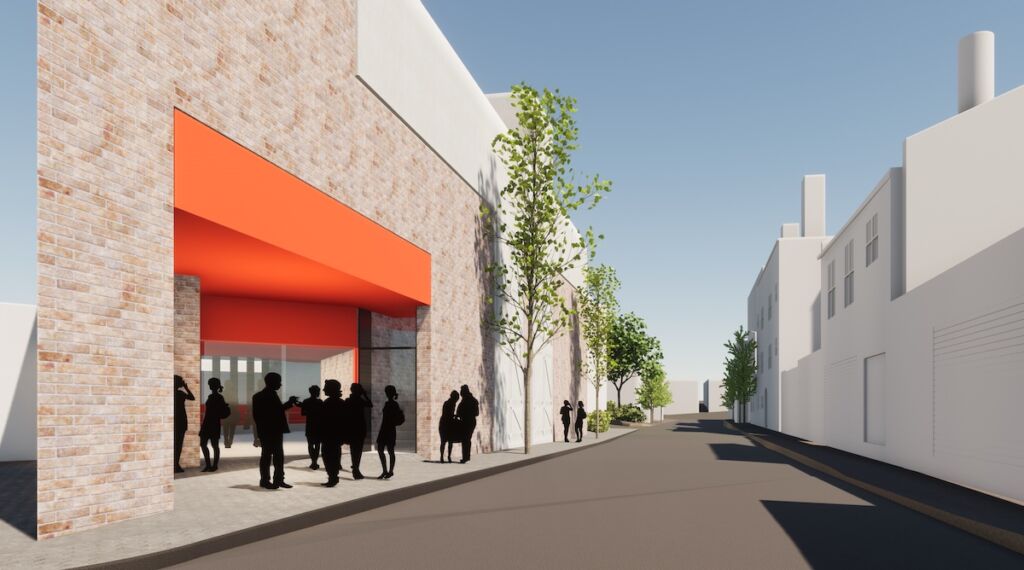
Abutting raffish, bohemian Kings Cross, the intimate, two-storey, triangular brick building at 10 Nimrod Street, Darlinghurst has had a storied existence as part of the national theatre scene for more than 50 years. Griffin Theatre Company, the only professional company exclusively dedicated to Australian works, moved in here in 1980, a year after being founded by half a dozen theatre professionals including the late actor Penny Cook.
In 2024, Griffin is finally poised to properly expand the SBW Stables Theatre, while vowing to maintain the intimacy prized by its faithful audiences. A $5 million donation from billionaire philanthropist Kerr Neilson and his daughters Paris and Beau through The Neilson Foundation allowed the company to buy the theatre outright, as well as the terrace house next door at 12 Nimrod Street. Bringing the two sites together as one redeveloped theatre will cost $11 million, including $5 million pledged by the New South Wales Government under its Creative Capital program, and a further $6 million now being fund-raised.
Closing in May, after its ambitious staging of Louis Nowra’s The Lewis Trilogy, Griffin will set about adding a rehearsal room; at present, directors and actors are forced to borrow spaces as far away as Parramatta. Backstage is currently a squeezy corridor with one functioning toilet, so this will be expanded, while a multi-use performance space for late-night programming will be added. The auditorium capacity will increase from 105 to 140 seats.
The new works, designed by Tim Greer of Tonkin Zulaikha Greer Architects, which revamped the foyer a decade ago, are projected to take about 18 months. Critically, given the old, steep staircase is prohibitive for wheelchair users, an elevator will be installed.
John Bell, Ken Horler and Richard Wherrett established the now defunct Nimrod Theatre Company there in 1970. This was the first time the building had been converted into a theatre, but its identity dates back to the 1890s, when a single-storey timber building was first listed on the site for the purpose of “stables”.
Over the ensuing decades, it would serve as a garage, a Sunday school, a gymnasium, a taxi company’s headquarters and a silk screen printing studio, before becoming a theatre. By 1986, it was back on the market and faced demolition. The late arts philanthropist Dr Rodney Seaborn saved the building by establishing the Seaborn, Broughton & Walford Foundation. With his cousins on the board, the foundation now owned what became the SBW Stables Theatre – a permanent, rent-free home for Griffin.
Work carried out since then includes raising the roof and removing internal columns, but even now, there is no appetite to significantly alter Larry Eastwood’s kite-shaped stage design from the Nimrod days, with only a slight sinking to be carried out. Griffin Artistic Director and co-Chief Executive Officer Declan Greene explains audiences want “intimacy and connection” from the Stables and Griffin. He promises the venue won’t be too slick when it reopens in late 2025 to early 2026, but kept in line with its work, which he describes as a “little bit chaotic”. During the closure, Griffin will stage productions in various Sydney locations including Carriageworks.
White Bay Power Station, Sydney
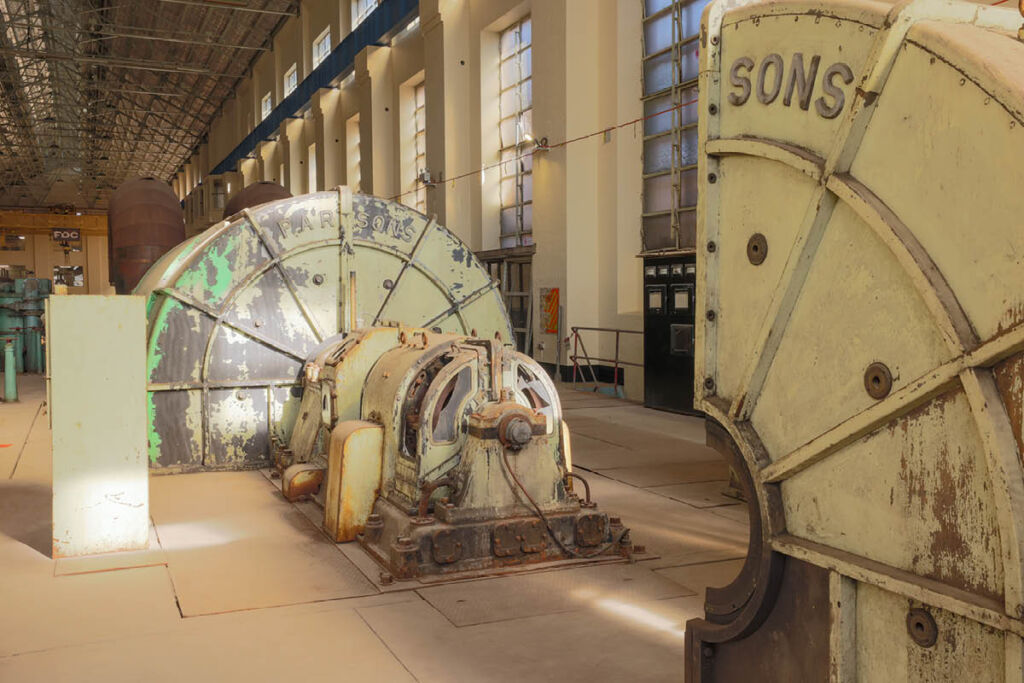

On 9 March, the public will at last see the huge former coal-fired White Bay Power Station on the western side of Sydney’s Anzac Bridge when it opens for the 2024 Biennale of Sydney “in all its post-industrial glory”, says Craig Donarski, the inaugural Manager, Arts and Creative Industries overseeing the new arts, culture and community hub.
This is only the beginning. Once the Biennale wraps in the Turbine Hall and Boiler House on 10 June, other festivals, classical music and contemporary dance will jostle to use the spaces. “The possibilities are endless and once you see it in person, your imagination will hit overdrive,” promises Donarksi, who was Director of Casula Powerhouse Arts Centre for seven years. Tests and trials of works are still needed to determine the spaces’ sonics.
The heritage-listed site will eventually have the capacity to grow from 2,000 to 4,500 people, with dressing rooms and a green room yet to come. A charming, separate 1920s Rec Hall with capacity for about 160 people will be available for hire too. Meanwhile, with The Cutaway at Barangaroo closing for around a year for capital works, White Bay should pick up some shows planned for that site from mid-2024.
Riverside Theatres, Parramatta

In Sydney’s geographical centre – Parramatta – there is no large-scale performance space capable of taking major works of musical and dramatic theatre and concerts. “That’s a huge issue,” says Craig McMaster, who has been charged with oversight of the $140 million redevelopment of Riverside Theatres following his appointment as Director in 2021. The redevelopment has been a long time coming.
Rebooting the project, expressions of interest for a new concept design opened in late 2023. A shortlist of five competing architectural teams was released in December and the winner will be announced in the first quarter of this year.
The “minimum position” will be adding a 1,350 to 1,400-seat lyric theatre; refurbishing the existing 760-seat Riverside Theatre; constructing a new 430-seat black box drama/performance theatre and a new 80 to 90-seat digital development studio and cinema; as well as much larger public spaces and foyers.
“But hopefully we can get something even more exciting,” says McMaster, noting the lack of viability for hosting some major productions with just the present 760 seats. “If we can hit that magic 1,500-mark in the lyric theatre, there will be a lot of happy commercial producers.”
Riverside is still programming through to January 2025, so it will likely host shows for next year’s Sydney Festival before closing entirely in early February 2025, with rebuilding taking about two years and three months. “Our hope is there will be a practical completion in the first part of 2027, and I would say [we’ll] hopefully open between the end of the first quarter and middle of 2027.”
For performances by regular presenting companies during the closure period, such as Monkey Baa and Sport for Jove, McMaster’s team is doing preliminary scoping on Riverside potentially opening its own temporary venue in partnership with an existing council facility, but he can’t reveal details yet. Such a measure, alongside touring, “will keep the National Theatre of Parramatta operating at full steam,” he says.
There are also discussions underway to use some of the facilities at the new Powerhouse Museum in Parramatta when it opens in late 2025; “a happy accident of alignment of timings”, he says.
In the meantime, British theatre impresario Sir Howard Panter, recently in Sydney to scout for new theatre locations himself among underutilised commercial buildings in the CBD, has offered to bring a pop-up theatre for musical productions to Parramatta, which could then be relocated to other cities and towns in New South Wales – provided the Federal and State governments are prepared to invest and/or give planning support to the $30 million venture.
The NSW Minister for the Arts, Music and the Night-time Economy, John Graham, told The Sydney Morning Herald the idea had merit, and welcomed “the private sector being willing to contribute to the cultural infrastructure of NSW – be it in Newcastle or Parramatta”.
Sydney Lyric Theatre

Berlin cabaret style? 1920s vibes? Weimar via the harbour? If that sounds alluring, then Foundation Theatres, owner of Sydney’s 2,000-seat Lyric Theatre, hopes to wilkommen you soon to a new venue in Pyrmont, with a $10 million plan to convert a rear stage space never used at the Lyric into a separate theatre for cabaret, plays, musicals and live music. The new venue will have 360 seats, including 80 in a rear balcony, with capacity for 630 people standing when seating is retracted.
If the City of Sydney approves the project, work will start early in 2024 and will be completed in time to host Sydney Festival productions in January 2025 (the festival is keen on the idea). Foundation Theatre’s Chief Executive Graeme Kearns says the new space will always be a sister to the Lyric but with its own identity, having a small hallway entrance – “think speakeasy with a lovely studio at the end . . . cool, dark and moody”. It will be suitable for “a small play, a cabaret night, an emerging artist looking for an audience or emerging creatives trying out a new musical. That emerging work is the stuff we’re really interested in. We’re not going to be closed-minded.”
Construction of the new theatre, yet to be named, will not affect the Lyric’s operations, says Kearns. In addition, Foundation Theatres received planning approval in 2023 to fulfil a commercial agreement with The Star casino and entertainment complex to convert convention space into two more theatres, at a cost of $125 million by 2026. All four theatres will run independently of The Star, currently being restructured due to huge debts and what Kearns refers to as “well-documented challenges”.
Construction on these two extra theatres should begin in 2024. A new Broadway-style theatre of 1,500 seats will be “the missing tooth in the Sydney smile” for large-scale ballet, musicals, plays and opera, says Kearns. In addition, an 800-seat live room, not dissimilar to the imminent studio but with a semicircular seating arrangement, will host more comedy, cabaret and contemporary music.
So Pyrmont can sustain four theatres? “Exactly,” says Kearns. “We’re not going to spend all that money without focus studies.”
Queensland Performing Arts Centre
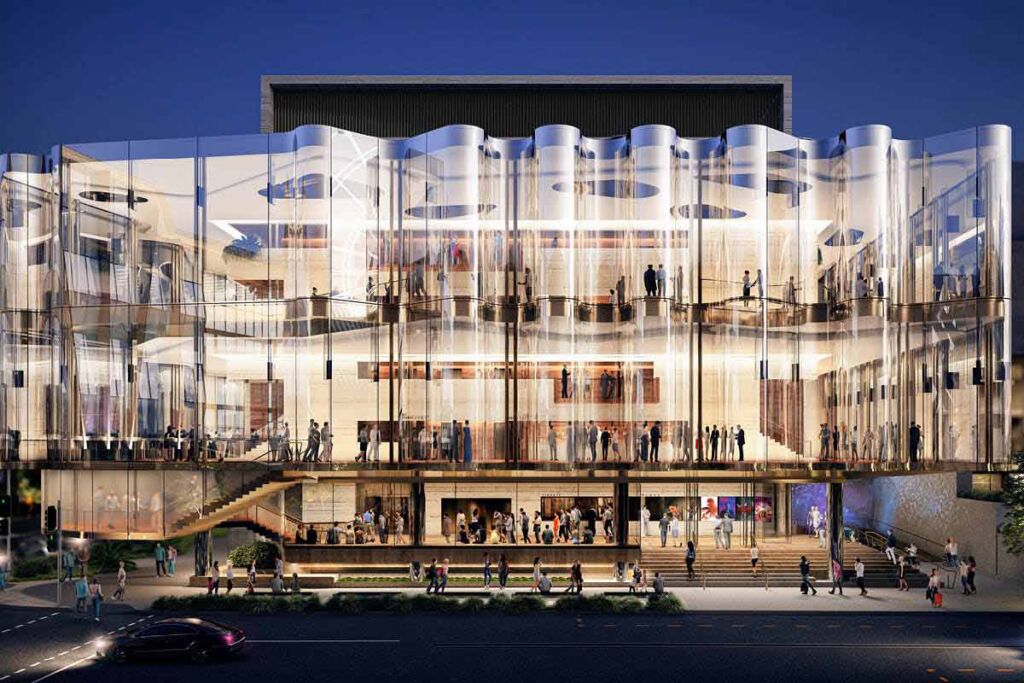

What a difference a crisis or two makes. Queensland Performing Arts Centre had planned to open a fifth theatre by late 2022, after the Queensland Government announced its commitment of $125 million over four years in May 2018, with QPAC contributing an additional $25 million to fund the $150 million venue. In May 2019, the Government announced Blight Rayner + Snøhetta as the Principal Consultant design team, and in March 2020, construction under Lendlease began at the Playhouse Green site, but then . . .
“We’ve had COVID, we’ve had a flood, we’ve also had a world crisis in terms of materials,” says the centre’s Chief Executive John Kotzas. “Timelines have had to be slightly extended, yes.”
The good news is that the new 1,500-seat theatre – now costing $175 million of which the Government is contributing $150 million – should be finished by the second half of 2024. It will fill the missing sweet spot between the Playhouse’s 800 seats and the Lyric’s 2,000, particularly as attendances claw back to pre-lockdown levels.
“Over the last 10 years, we’ve seen our attendances grow almost beyond our capacity to deliver in the other theatres, and we’ve also seen the local arts sector ecology growing,” Kotzas explains, noting that international touring shows would also work well in the new theatre.
The plans were revised in response to a critical review by West End producer Cameron Mackintosh. “We [then] made the space more intimate,” Kotzas reveals, “and we created these ribbons – what you think of as box seats in traditional theatres – and brought the audience right down closer to the stage, so that someone on stage can almost touch an audience member.”
The two-level auditorium will have 1,000 seats in the stalls and a balcony of 500, with a spectacular, rippled glass façade and transparent foyer spaces opening to the city, South Bank and the Brisbane River, while a “wheelchair aisle” will ensure people with mobility issues can access A reserve seats.
Perth Concert Hall
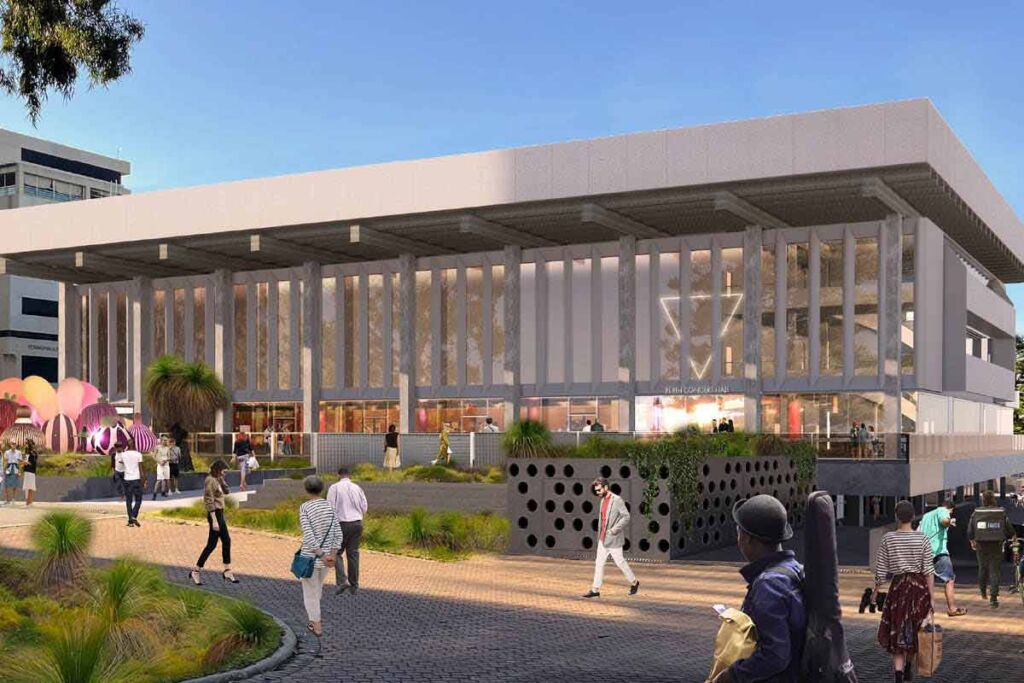
Brutalist with its white, off-form concrete exterior, the heritage-listed Perth Concert Hall, designed by architects Jeffrey Howlett and Don Bailey, opened in January 1973. Fifty-one years later, major works are required: overdue structural maintenance, preservation of acoustics, accessibility improvements, updates to forecourts, seating, rehearsal and backstage spaces, and refurbishment of working areas used each day by the West Australian Symphony Orchestra.
But when will the two-year closure for the $150 million in works begin? In late January, the West Australian Government Redevelopment Project team advised WASO that the Concert Hall will remain open for the rest of 2024. Thus, the orchestra’s monumental gala of Mahler’s Eighth – the so-called Symphony of a Thousand – under the baton of Asher Fisch on 13 and 14 September won’t be its last concert there before structural works begin, as previously anticipated. In October and November, WASO’s Spring Fest offering of Mozart and Brahms will also now go ahead at Perth Concert Hall, rather than following an earlier plan to use the University of Western Australia’s Winthrop Hall.
WASO Chief Executive Paul Shannon says presenting Mahler 8 in Perth Concert Hall “has been a long-held ambition for WASO, as this will be the first professional performance of the work in Western Australia”. It just won’t be a last hurrah before the building’s redevelopment.
The delayed closure suggests 2025 might be the year for the transformation of the Concert Hall. A spokeswoman for Arts Minister David Templeman says the timeline will be announced upon the appointment of a main works contractor, noting that during the construction period, WASO, the Western Australian Youth Orchestra and touring companies such as the Australian Chamber Orchestra and Musica Viva Australia “will present works across a variety of Perth theatres and halls”.



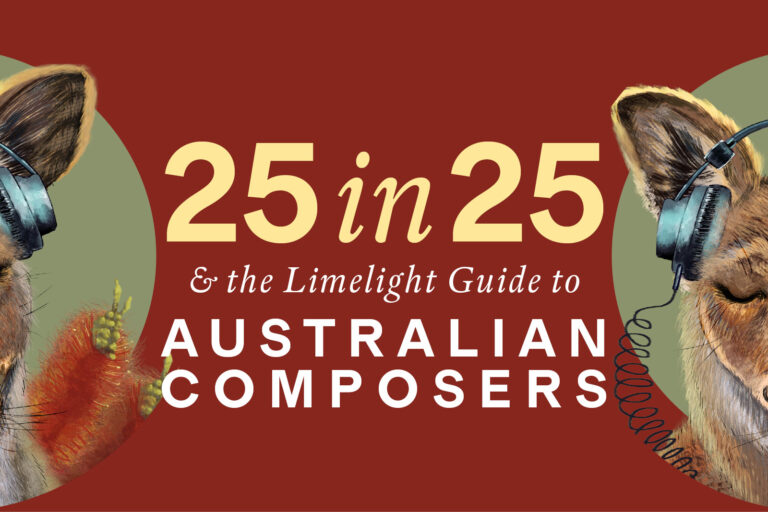

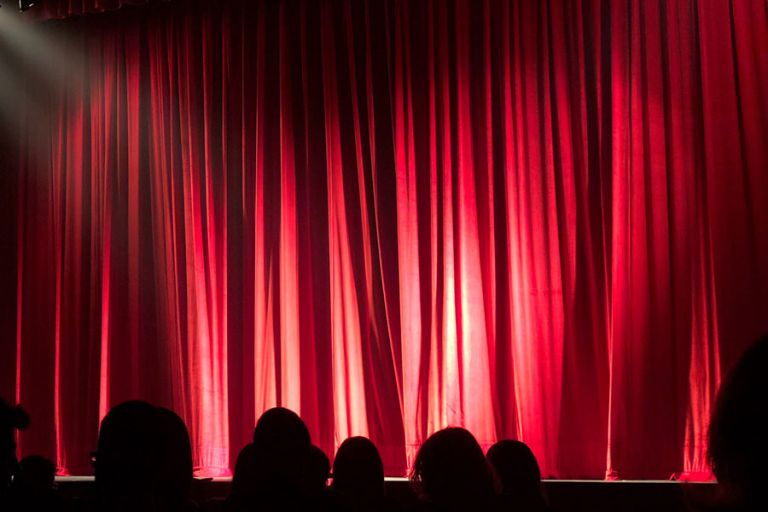
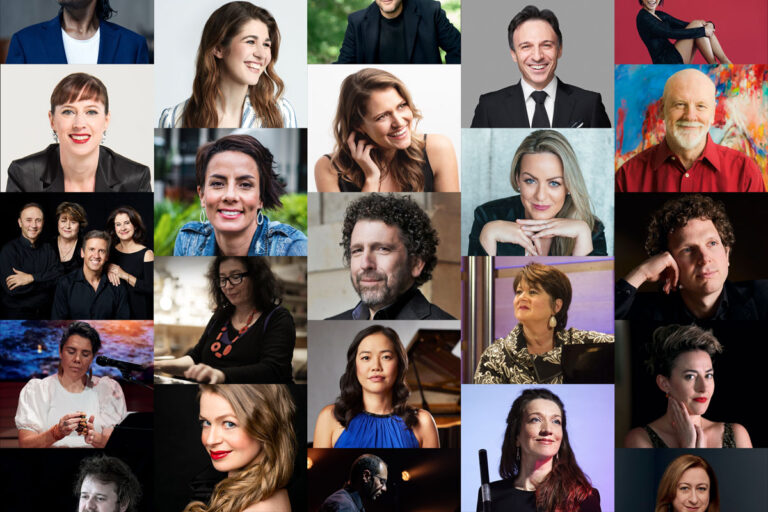




Comments
Log in to start the conversation.